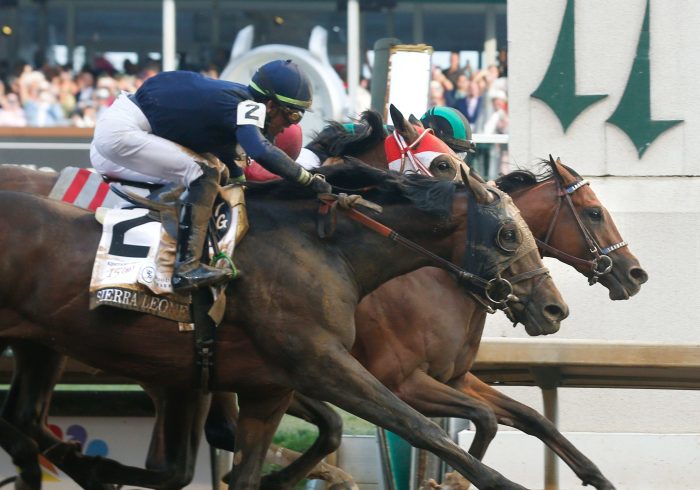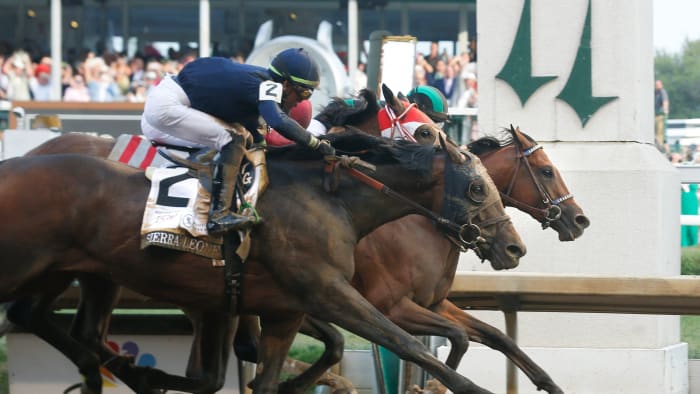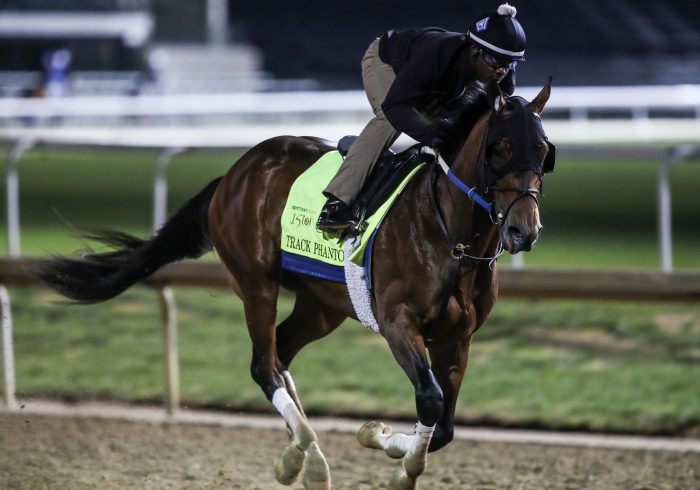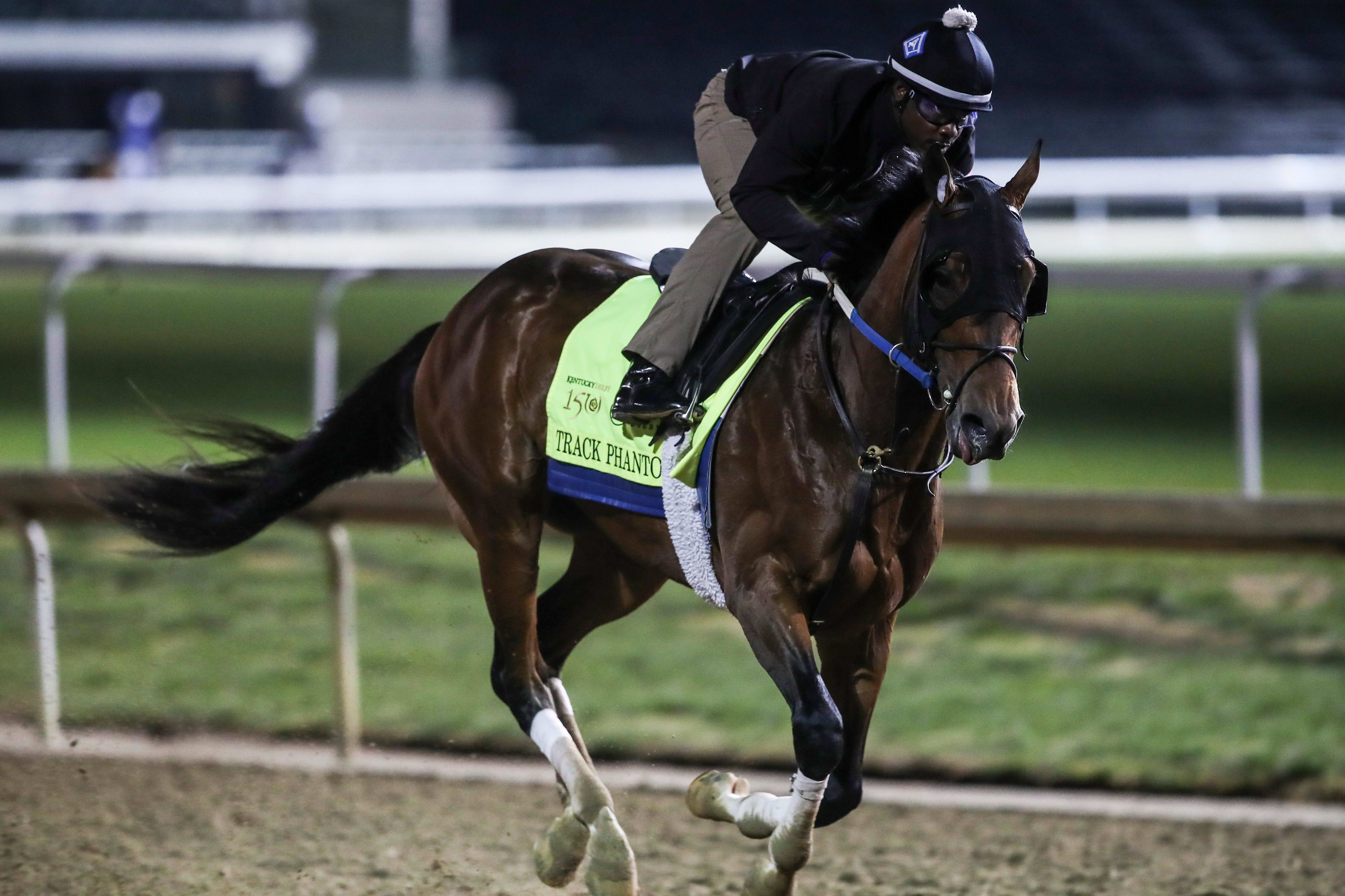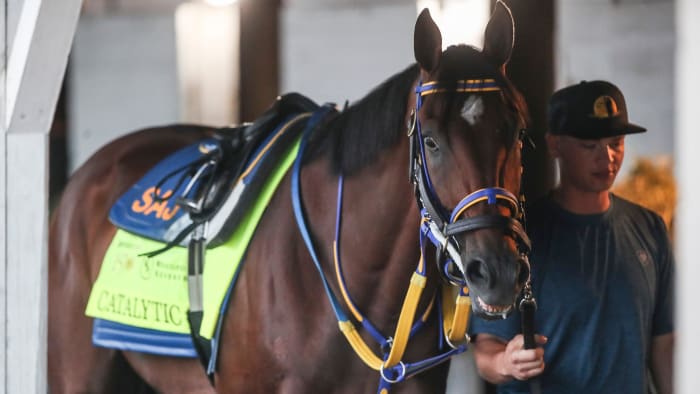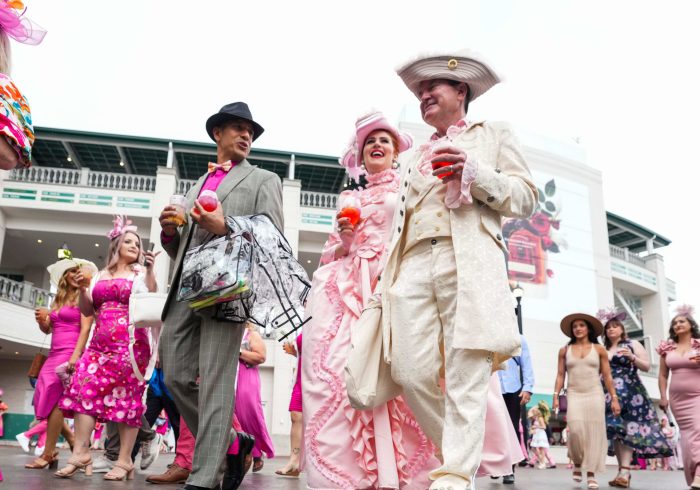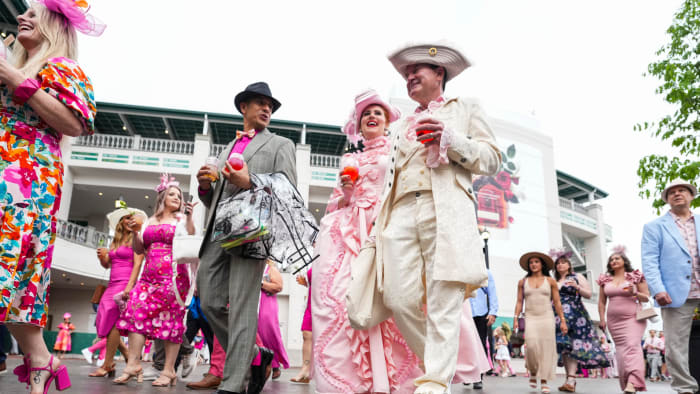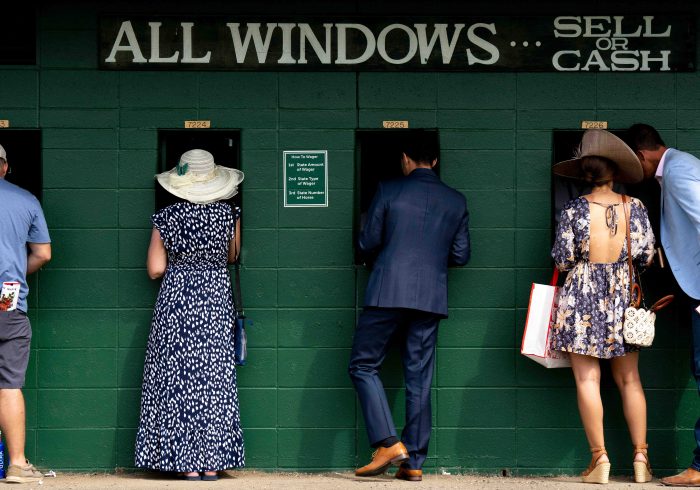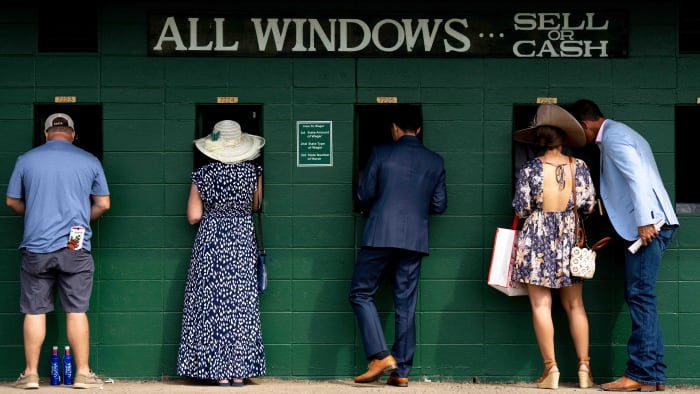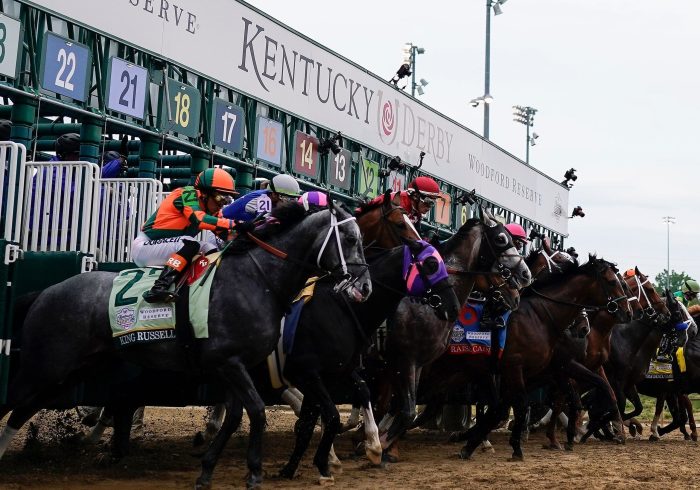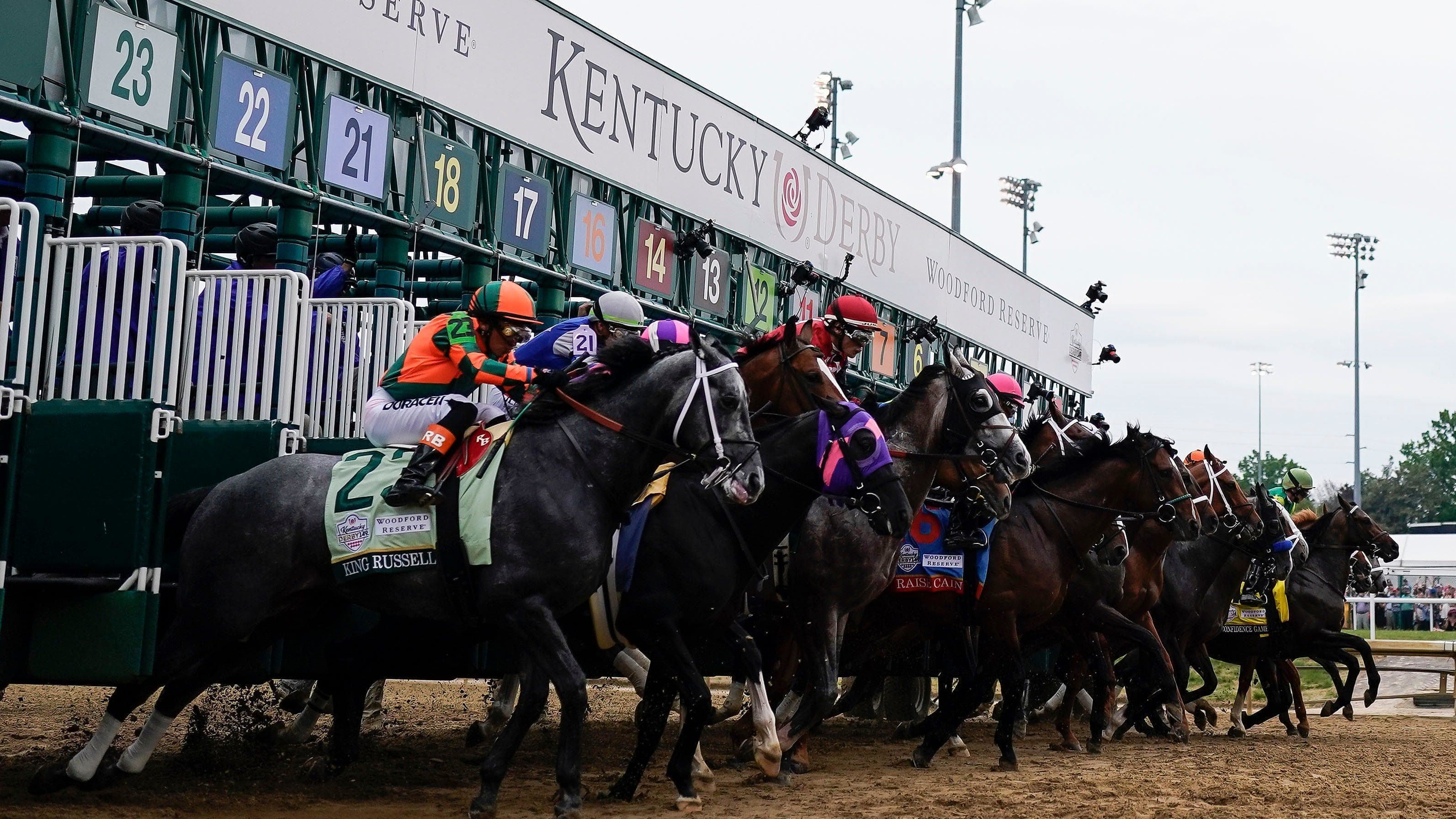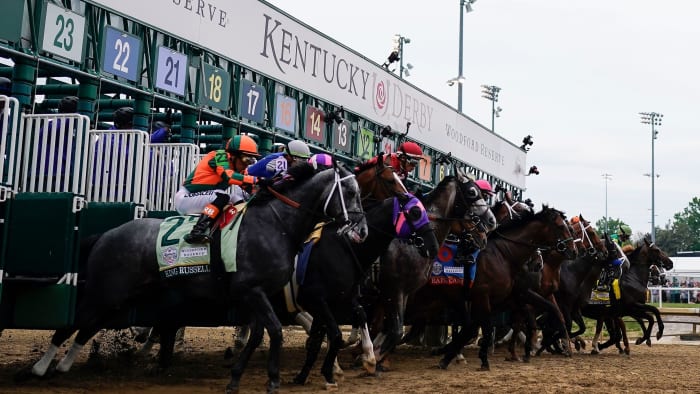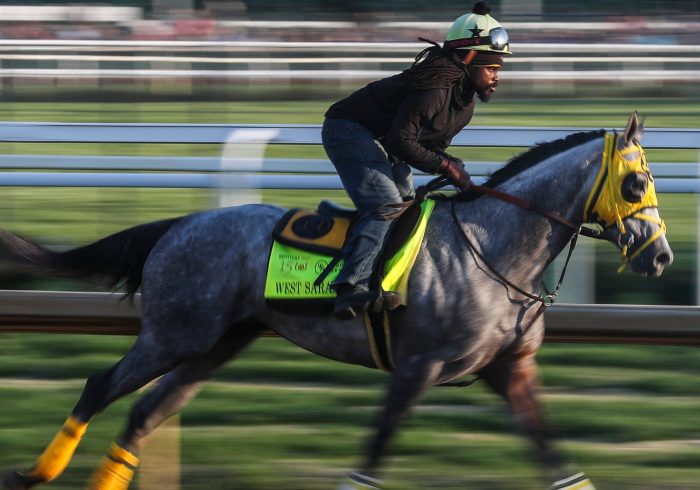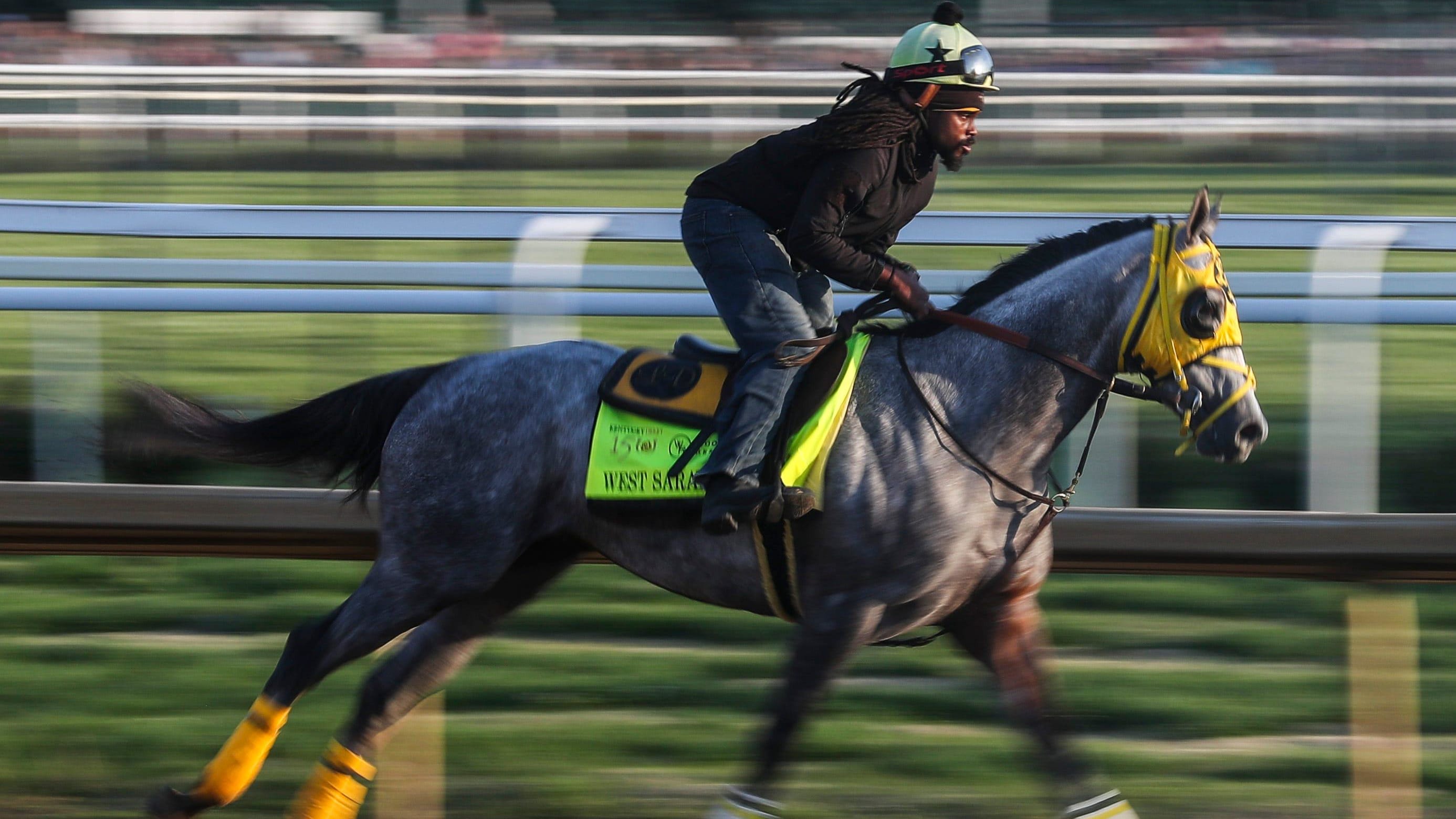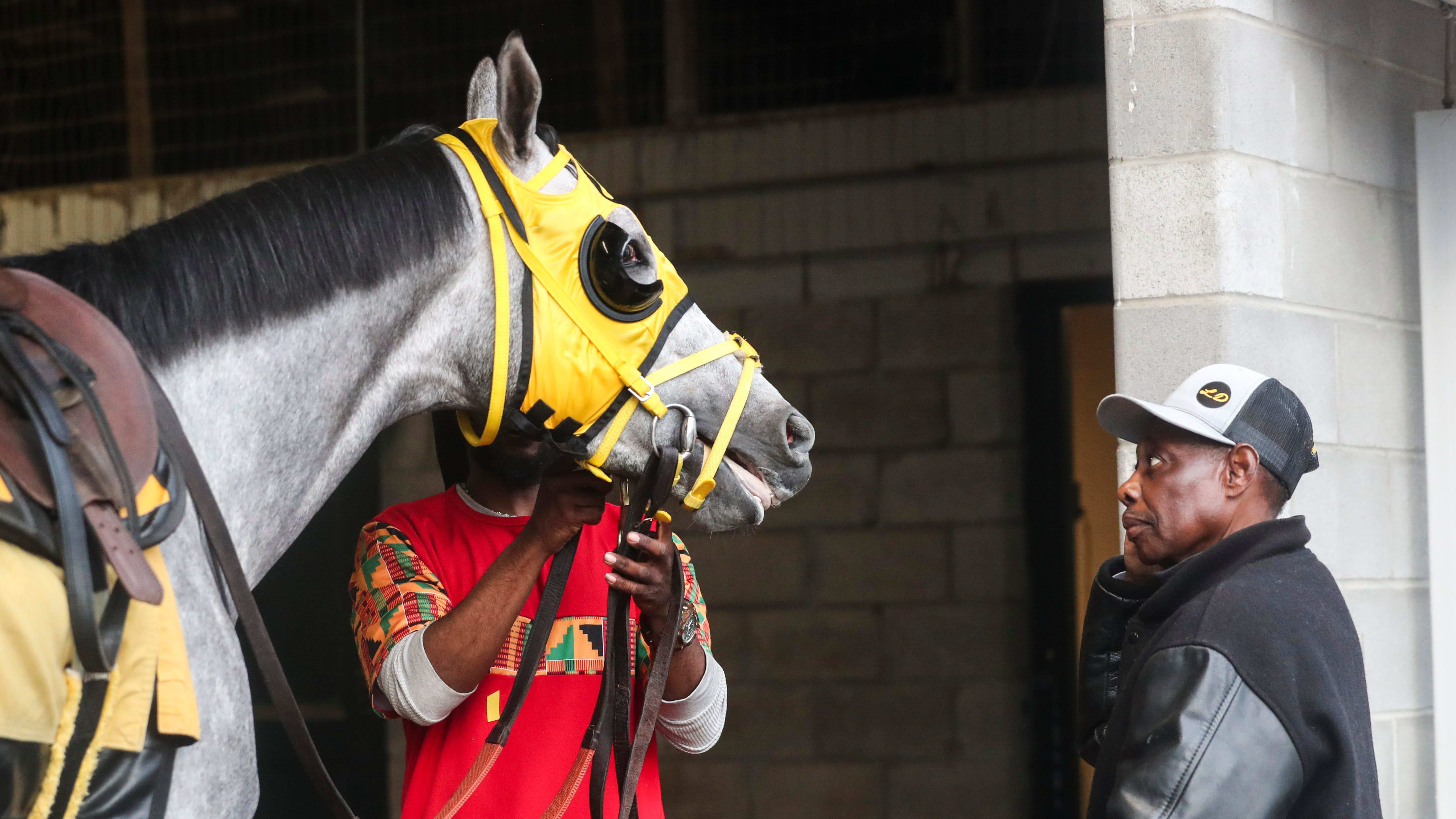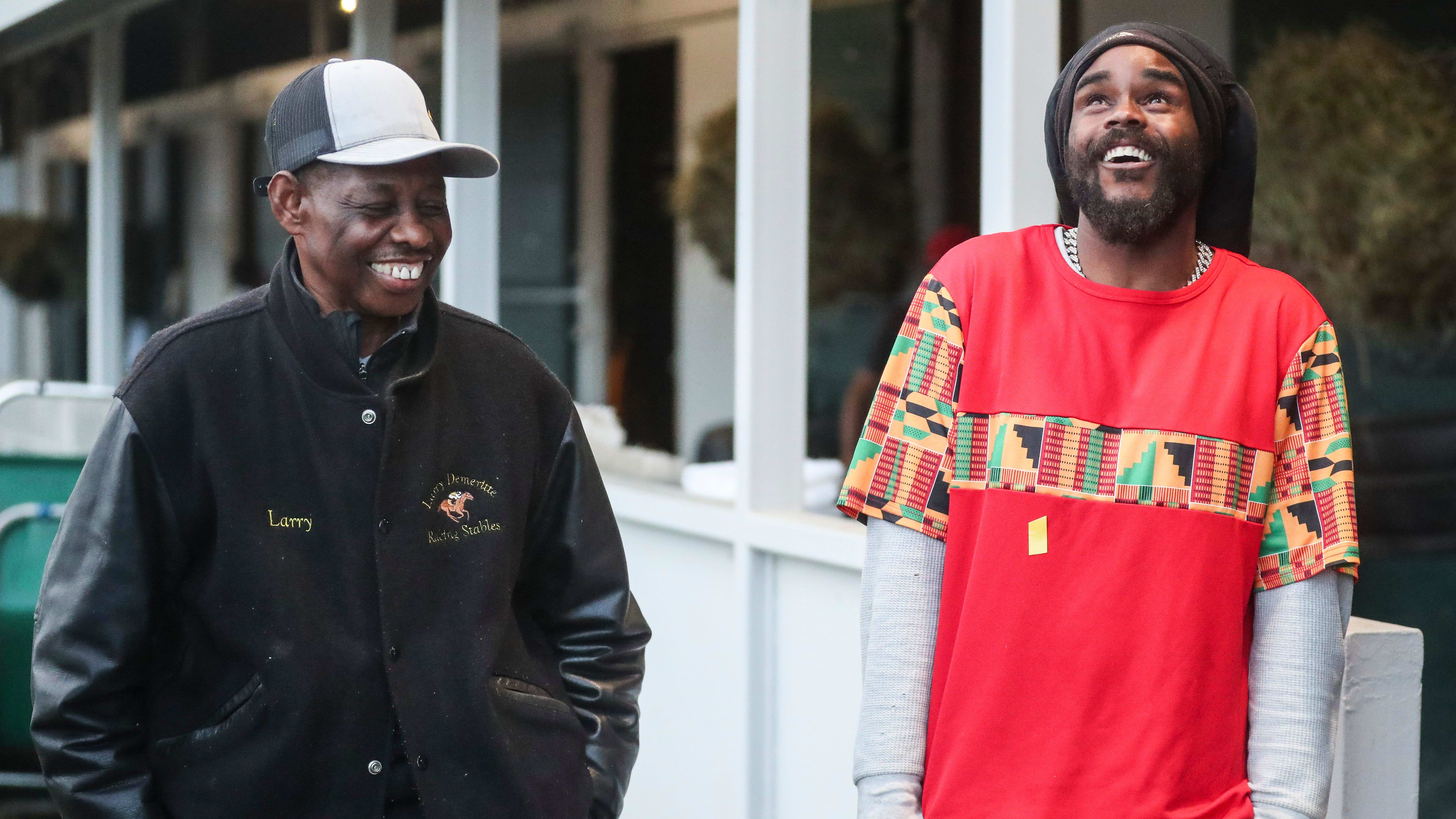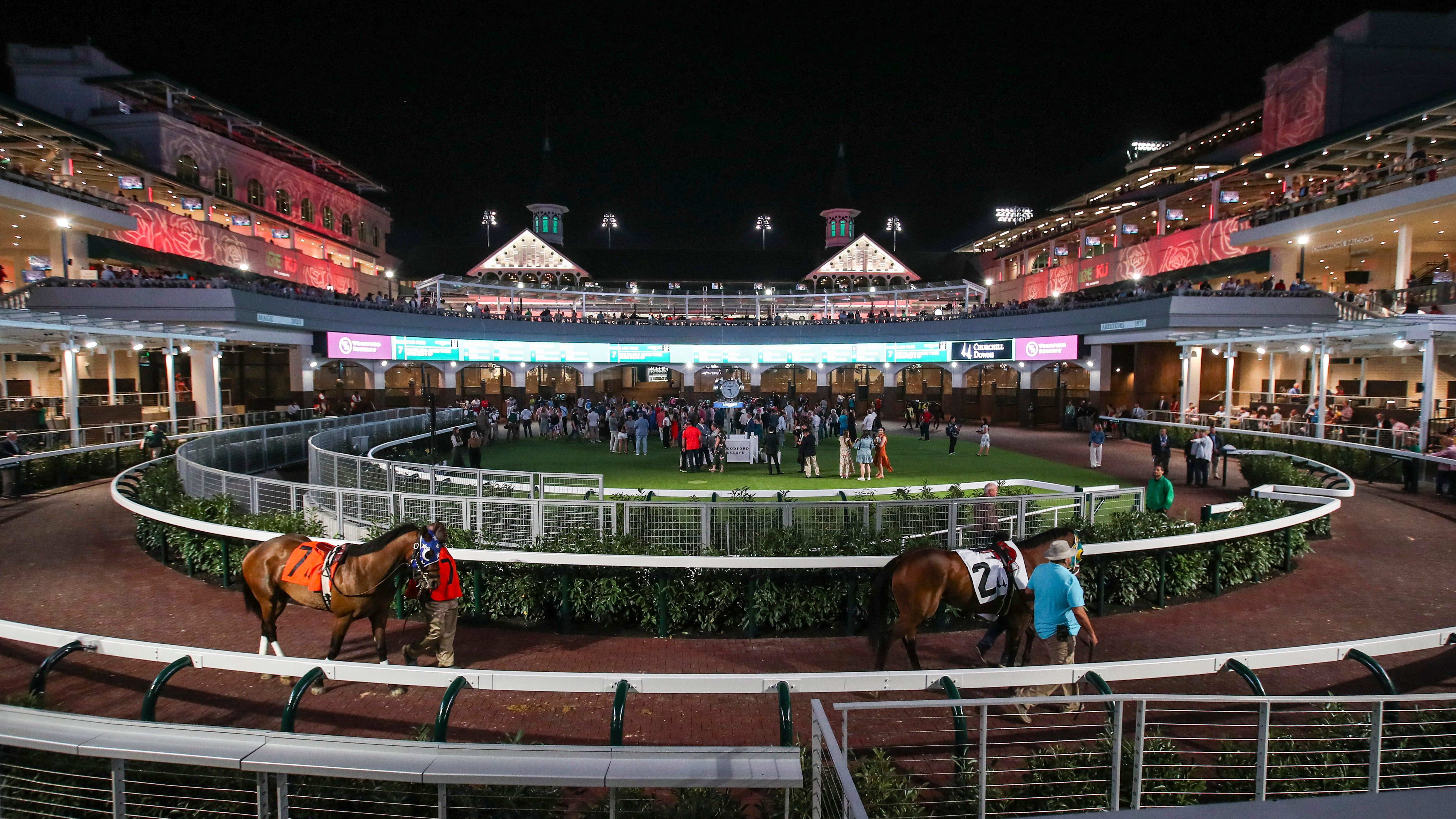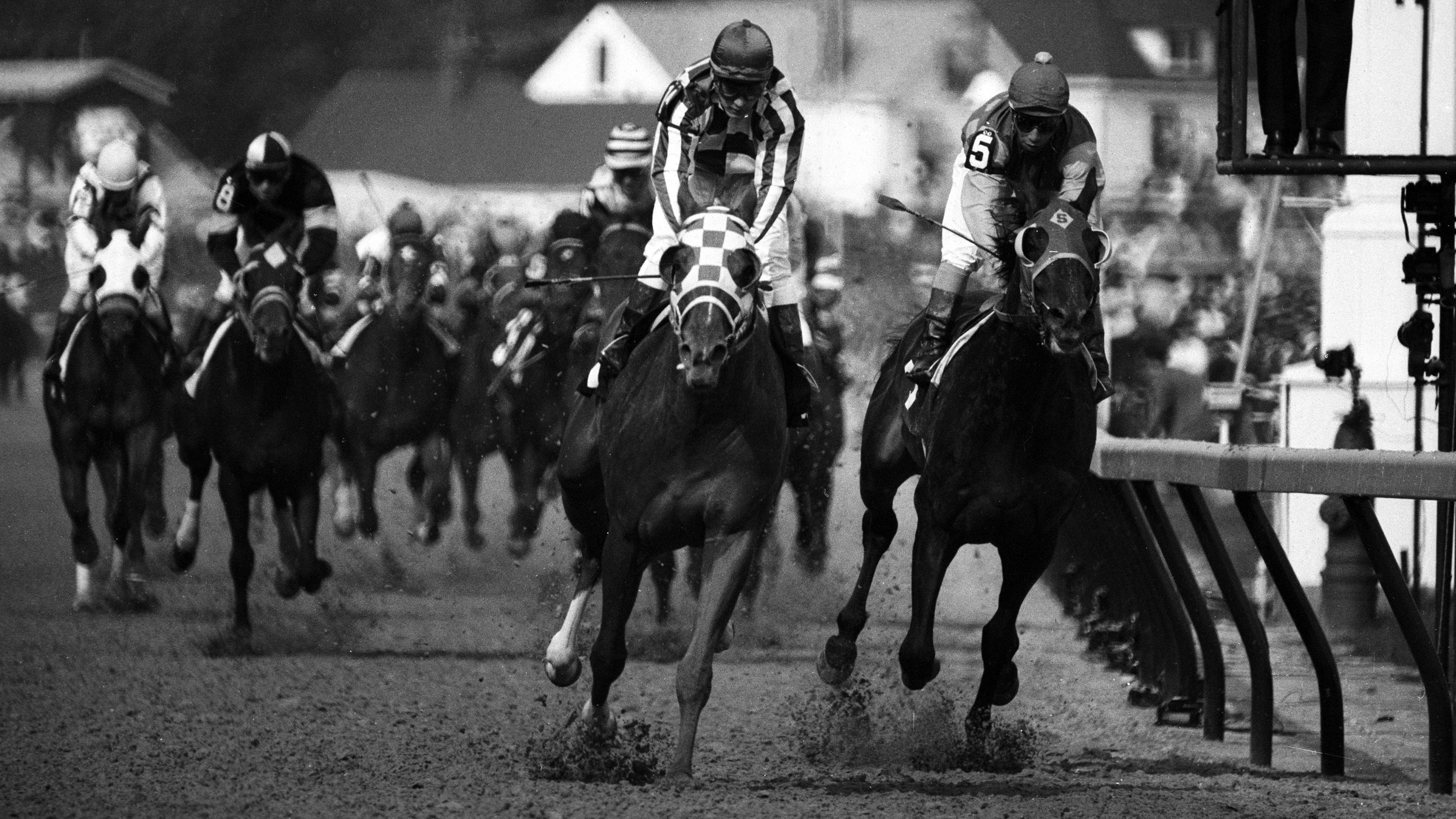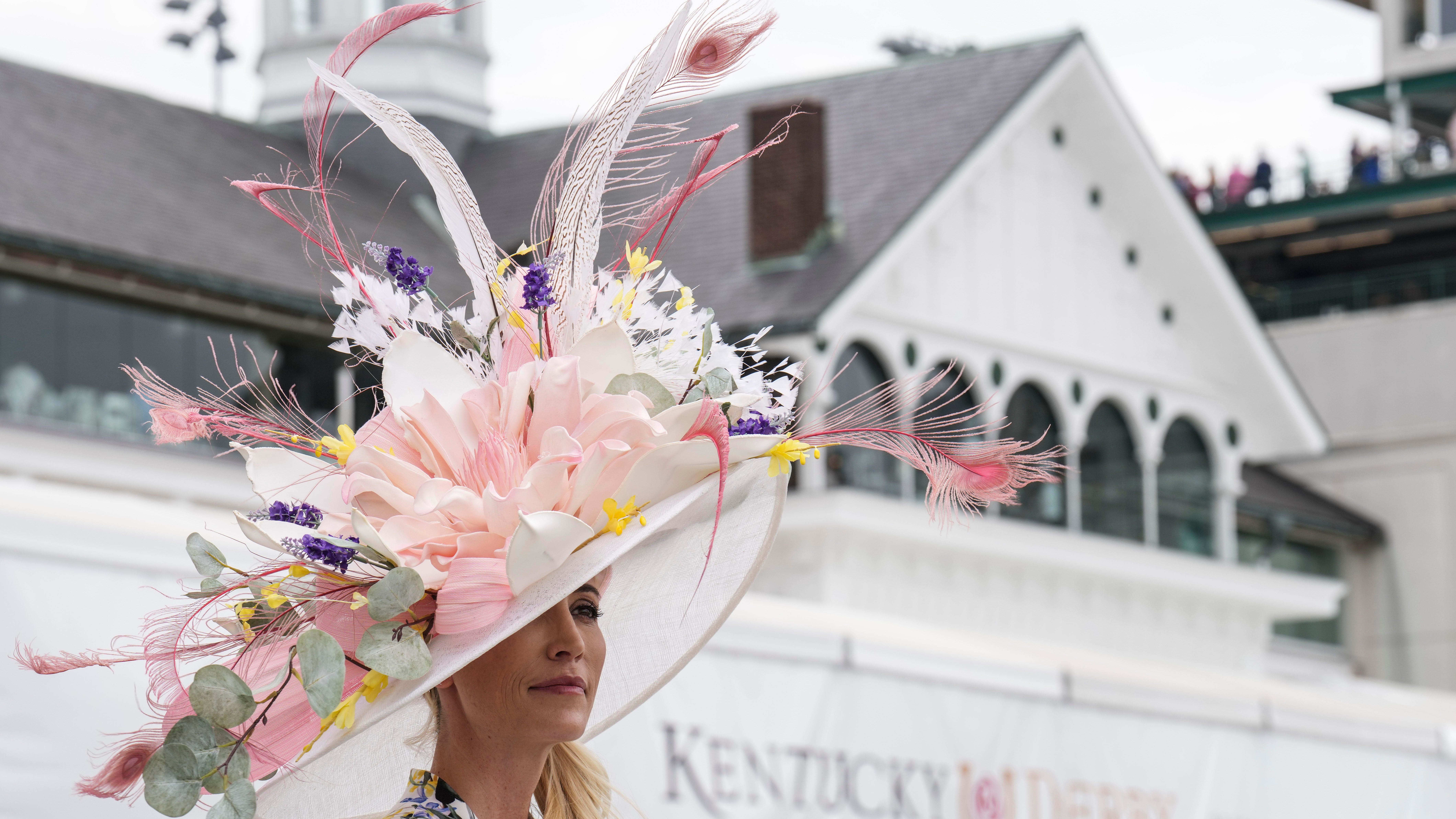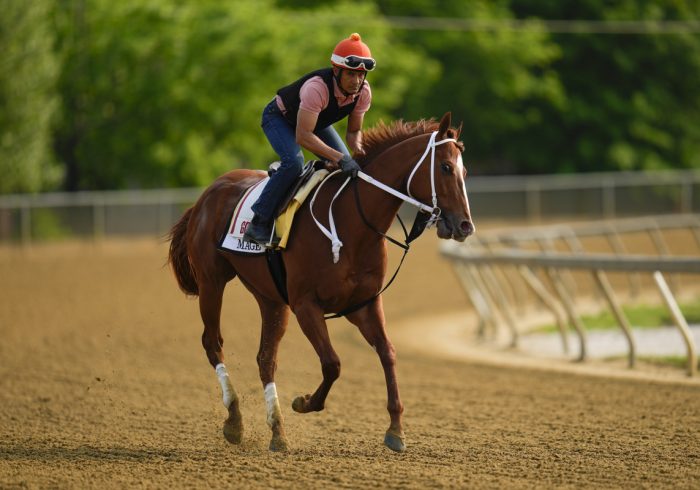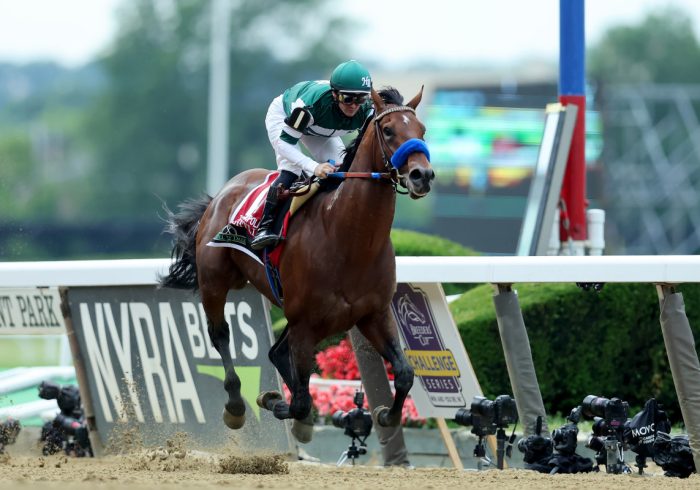Mystik Dan Delivers Kentucky Derby Victory for the Ages
Walking by the Kentucky Derby winner’s circle after the biggest victory of his life, trainer Kenny McPeek held the hand of his daughter, Annie. McPeek looked at her and, with his other hand, held his index finger and thumb about three inches apart. That was his assessment of the margin of victory in one of the most dramatic Derbies in the 150-year history of the race.
A three-horse photo finish, the first in the Derby since 1947, turned the 1 1/4-mile race into a withering battle of inches in the final strides. Nobody knew in real time who won—Mystik Dan on the inside, or the hard-charging duo of Sierra Leone and Forever Young in the middle of the track. When the official order of finish was posted it evoked gasps and roars from the Churchill Downs crowd of 156,710, with Mystik Dan declared the winner by a nose over Sierra Leone in second and Forever Young third.
Mystik Dan’s win was a significant upset at odds of 18-1, but the first career Derby win for McPeek and jockey Brian Hernandez nearly got away from them at the last second. Hernandez had gotten Mystik Dan clear in the stretch and was seemingly home free, driving for the finish line. Hernandez had no idea what was coming for him.
“Three jumps before the wire,” he said, “I didn’t see them at all.”
Then the pursuers loomed alongside. Sierra Leone and Forever Young waged their own battle and evoked memories of the 1933 “Fighting Finish” Derby, in which the jockeys of Brokers Tip and Head Play engaged in literal hand-to-hand combat in the stretch. Sierra Leone jockey Tyler Gafflione reached out with his left hand to seemingly grab the saddle or reins of Forever Young as they dueled. In the end, they both came up agonizingly short.
Past the wire, Hernandez thought he won but wasn’t sure as Mystik Dan galloped out around the turn. The jockey asked an outrider if the result was official yet, but it wasn’t.
“That was the longest two minutes in sports,” Hernandez said. “From the fastest two minutes (as the Derby is known) to the longest two minutes.”
After that brief eternity, the outrider got the news and relayed it to Hernandez: “You just won the Kentucky Derby.”
That moment capped an epic 25 hours for McPeek and Hernandez, who teamed up to win the Kentucky Oaks Friday with monster filly Thorpedo Anna. McPeek became the first trainer since 1952 to win that double, and Hernandez was the first jockey to do so since 2009. Neither man operates at the highest echelon of horse racing, but they stand astride the sport today.
In the days leading up to those races, McPeek radiated an almost outrageous confidence. “It wouldn’t surprise me if I won both,” he said two weeks ago.
The Oaks unfolded largely as expected Friday, with 4-1 Thorpedo Anna (“a grizzly,” McPeek says) dominating. Then came the harder part Saturday.
McPeek arrived at his Churchill barn at 7:30 a.m. Saturday, opened the back of his Mercedes SUV to let out his dog, and greeted reporters with this line: “Let’s do it again tonight.”
And then they did, with Hernandez delivering a ride that was both smart and daring.
The 38-year-old Louisiana native, who rides regularly at Churchill, got Mystik Dan out of the gate cleanly and steered him from the No. 3 post quickly to the rail for a ground-saving trip. Hernandez kept Mystik Dan tucked into a pocket of clear ground, never farther back than eighth place, settling the colt into an easy stride. “He was just cruising along so nicely and so comfortable,” Hernandez said.
From there, Hernandez drafted behind Track Phantom through the far turn. When Track Phantom drifted just a touch off the rail, Hernandez pounced. He urged Mystik Dan into the hole like a running back finding a sliver of daylight.
Joel Rosario appeared to try to swerve Track Phantom back over to cut him off. The two horses bumped hips but Mystik Dan was undeterred—he’s a smaller horse but still powered through along the rail and cut the corner into the stretch, drawing clear.
“Brian gave us a huge opportunity because we saved ground, saved ground, saved ground,” McPeek said. “And when you look at that photo finish, I think we needed all of it to hold off the two second- and third-place horses.”
It takes incredible nerve to urge a horse into a tight spot at high speed. But the Derby was on the line. It was a now-or-never moment and a spur-of-the-moment decision.
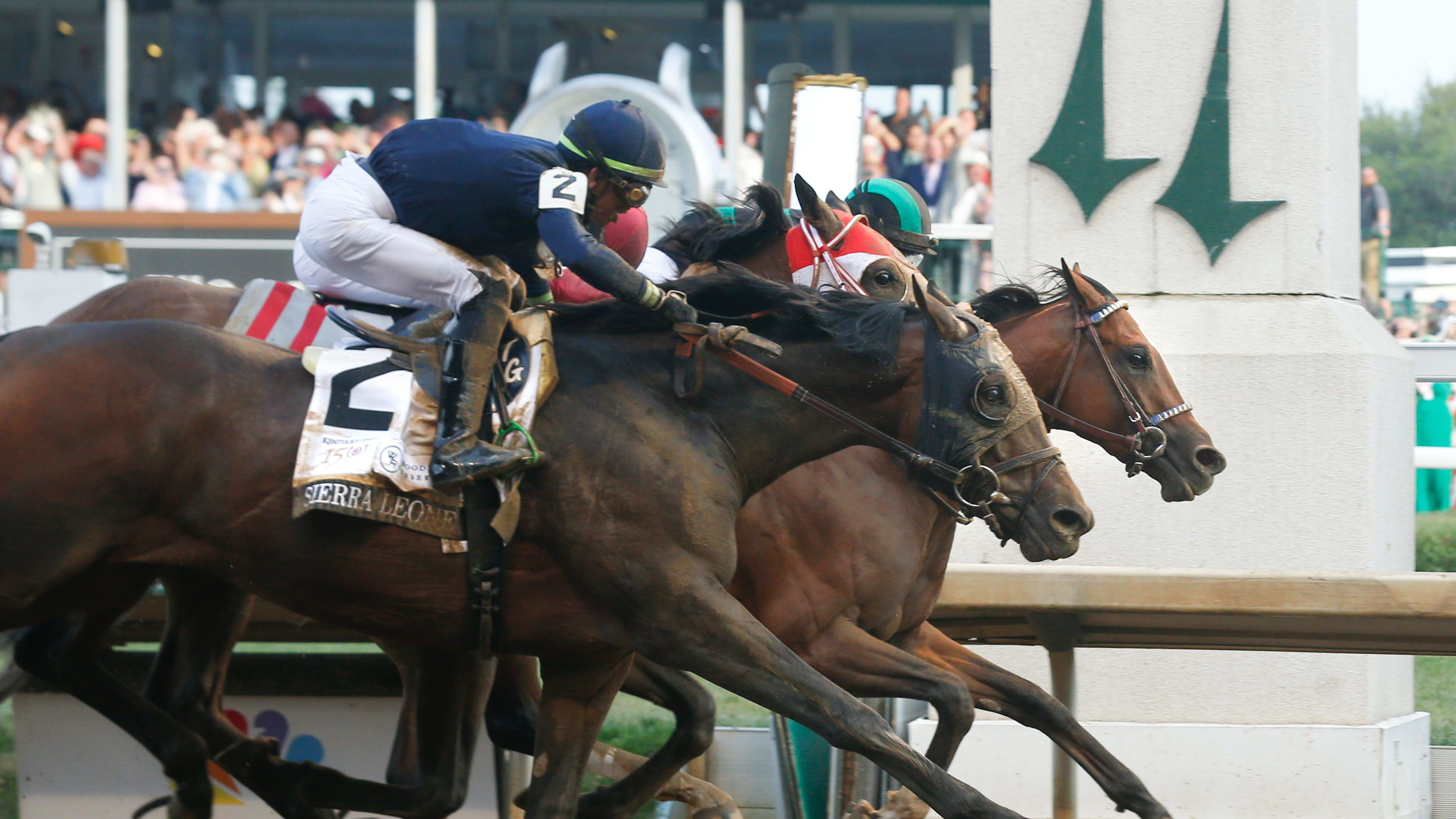
Mystik Dan, far, ridden by Brian Hernandez Jr won the 150th Kentucky Derby.
Matt Stone//Courier Journal / USA TODAY
“We might have took out a little bit of the inside fence, but that's okay,” Hernandez joked.
Hernandez had spent many years at Churchill learning from the master of the inside move, Calvin Borel, who won Derbies aboard Mine That Bird and Super Saver by hugging the rail. The shortest way around the track is as close to the rail as possible.
“As a young kid out of Louisiana, I got the privilege of sitting in the same corner (in the jockeys room) as Calvin Borel,” Hernandez said. “So I got to watch him ride those Derbies all those years. And today, with Mystik Dan being in the three‑hole, I watched a couple of his rides there between Super Saver and Mine That Bird. I said, ‘You know what? We're going to roll the dice.’”
Hernandez rolled sevens, Meanwhile, favored Fierceness rolled snake eyes—getting a favorable trip and pace but fading badly in the stretch to finish 15th. Second choice Sierra Leone came running late, as expected, but couldn’t collar Mystik Dan.
Sierra Leone was a $2.3 million yearling purchase, regally bred and seemingly destined for this moment. Mystik Dan was a homebred owned by Arkansas businessman Lance Gasaway, a former standout small-college wide receiver for the Arkansas-Monticello Boll Weevils who had never gotten a horse to the Derby before.
Asked what he was going to do Saturday night to celebrate, Gasaway said, “Probably drink a lot of alcohol.”
Gasaway got into racing through his father, who died a year ago Saturday. His stable isn’t lavish, but the decision—informed by input from McPeek—to breed their mare, Ma’am, to former Derby runner Goldencents proved to be the master stroke that produced Mystik Dan.
“This isn’t some zillion-dollar operation,” McPeek said. “We didn’t throw money at this. We thoughtfully went through it all, and it’s amazing.”
The 61-year-old McPeek has been around the sport for a long time, rising to within reach of winning a Derby in the 1990s. He finished second in 1995 with Tejano Run and had the 2001 favorite, Harlan’s Holiday, who finished seventh. Meanwhile, the Lexington, Ky., product and University of Kentucky graduate dabbled in things like developing an app (Horse Races Now) for videos of races. He’s always been a racing wonk who loves to talk about the inner workings of the sport.
“My grandfather took me to the races at Keeneland when I was boy,” he said. “Learned how to read a pedigree. Used to go to the Keeneland library and read about good horses. Went to [Kentucky] and found the [agriculture] library—in the basement of the agriculture library, I read every thoroughbred and blood horse record ever printed when I was in college.”
He’s won some big races—the 2002 Belmont, the 2020 Preakness, the Kentucky Oaks on Friday—but the Derby had remained elusive. For a Kentuckian, that was tough. Now, he’s reached the pinnacle.
By a matter of inches. The margin between making history and suffering a staggering defeat was that tiny. The three-horse photo finish in the 150th Kentucky Derby will be talked about in the sport for the next 150 years.
